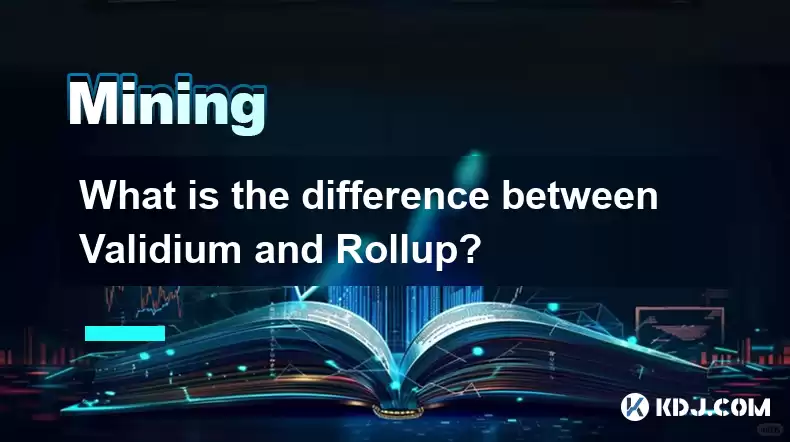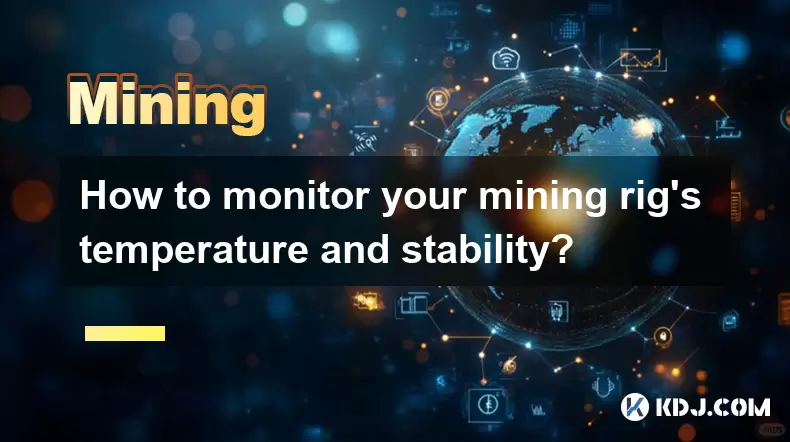-
 Bitcoin
Bitcoin $116400
-0.36% -
 Ethereum
Ethereum $4033
3.40% -
 XRP
XRP $3.302
-1.26% -
 Tether USDt
Tether USDt $1.000
-0.02% -
 BNB
BNB $796.1
1.67% -
 Solana
Solana $177.8
1.89% -
 USDC
USDC $0.9999
0.00% -
 Dogecoin
Dogecoin $0.2314
4.09% -
 TRON
TRON $0.3381
0.14% -
 Cardano
Cardano $0.7989
1.22% -
 Stellar
Stellar $0.4496
-1.84% -
 Chainlink
Chainlink $20.42
9.42% -
 Hyperliquid
Hyperliquid $41.17
0.88% -
 Sui
Sui $3.914
3.77% -
 Bitcoin Cash
Bitcoin Cash $584.7
1.52% -
 Hedera
Hedera $0.2632
-0.54% -
 Avalanche
Avalanche $24.09
3.40% -
 Ethena USDe
Ethena USDe $1.001
-0.02% -
 Litecoin
Litecoin $123.2
1.33% -
 Toncoin
Toncoin $3.318
-0.04% -
 UNUS SED LEO
UNUS SED LEO $8.984
-0.05% -
 Shiba Inu
Shiba Inu $0.00001323
2.85% -
 Uniswap
Uniswap $10.90
4.41% -
 Polkadot
Polkadot $3.999
3.34% -
 Dai
Dai $1.000
0.01% -
 Cronos
Cronos $0.1630
9.64% -
 Bitget Token
Bitget Token $4.484
0.82% -
 Monero
Monero $272.4
2.44% -
 Pepe
Pepe $0.00001173
6.03% -
 Aave
Aave $290.8
2.88%
What is the difference between Validium and Rollup?
In terms of scalability, Validiums excel with higher transaction throughput by leveraging validity proofs, while Rollups prioritize security with fraud proofs, offering a trade-off between speed and decentralization.
Feb 24, 2025 at 07:06 pm

Key Points:
- Conceptual Differences: Validium vs Rollup - Understanding the Underlying Concepts
- Architecture and Functionality: Unraveling the Architectural and Functional Differences
- Transaction Processing: Exploring the Distinct Transaction Processing Mechanisms
- Scalability and Throughput: Comparing the Scalability and Throughput Capabilities
- Security and Reliability: Assessing the Security and Reliability Implications
- Cost Considerations: Delving into the Economic Aspects and Cost Implications
- Current State and Future Outlook: Examining the Present Landscape and Forecasting the Future
Comprehensive Guide to Validium vs. Rollup
1. Conceptual Differences: Validium vs. Rollup - Understanding the Underlying Concepts
Validium and Rollup are both layer-2 scaling solutions for blockchain networks that aim to improve transaction speed and efficiency. However, they employ different approaches to achieve scalability.
- Validiums: Validiums are validity-based rollups that use cryptographic proofs to validate transaction batches. Instead of posting the full transaction data on-chain, only the compressed proofs are published, significantly reducing the gas costs and improving scalability.
- Rollups: Rollups are optimistic rollups that temporarily store transaction data off-chain and rely on fraud proofs to challenge invalid transactions. If a dispute arises, the full transaction data is published on-chain for verification, providing strong immutability guarantees.
2. Architecture and Functionality: Unraveling the Architectural and Functional Differences
Architecture:
- Validiums: Validiums have a complex architecture that includes a sequencer, validators, and a blockchain. The sequencer collects transactions and publishes validity proofs on the blockchain, while the validators check the validity of the proofs.
- Rollups: Rollups have a simpler architecture with just a sequencer and a blockchain. The sequencer bundles transactions into batches and publishes them on the blockchain, and any disputes are resolved on-chain.
Functionality:
- Validiums: Validiums provide faster transaction finality than rollups because validity proofs are smaller and easier to verify than transaction data. However, they sacrifice decentralization as the sequencer has significant control over transaction ordering.
- Rollups: Rollups offer higher decentralization as all nodes can participate in fraud proof verification. However, transaction finality is slower as disputed transactions require on-chain resolution.
3. Transaction Processing: Exploring the Distinct Transaction Processing Mechanisms
Transaction Processing:
- Validiums: Validiums batch transactions off-chain and generate validity proofs. The proofs are used to verify the validity of the transactions without revealing the full transaction data, providing scalability and reducing costs.
- Rollups: Rollups also batch transactions off-chain but use a different approach called optimistic rollups. Transactions are assumed to be valid unless a fraud proof is submitted within a challenge period. If a fraud proof is submitted, the transaction data is published on-chain for verification.
4. Scalability and Throughput: Comparing the Scalability and Throughput Capabilities
Scalability:
- Validiums: Validiums are highly scalable as they significantly reduce the amount of data stored on-chain. By using validity proofs, Validiums can achieve higher throughput while maintaining data integrity.
- Rollups: Rollups also offer scalability benefits by moving transaction processing off-chain, but their scalability is limited by the challenge period required for fraud resolution.
Throughput:
- Validiums: Validiums typically have higher throughput than rollups because validity proofs are processed faster than full transaction data. This allows Validiums to handle a larger volume of transactions per second.
- Rollups: Rollups have a variable throughput that depends on the challenge period and the rate of fraudulent transactions. If the challenge period is long, throughput may be lower, but it can be increased by reducing the challenge period, which comes at the cost of security.
5. Security and Reliability: Assessing the Security and Reliability Implications
Security:
- Validiums: Validiums have a lower level of security compared to rollups because they rely on trusted parties, such as the sequencer and validators, to generate and verify validity proofs. If these parties are compromised, the validity of transactions could be undermined.
- Rollups: Rollups provide stronger security as all nodes can participate in fraud proof verification, preventing malicious sequencers from manipulating the system. The underlying blockchain also provides additional security measures.
Reliability:
- Validiums: Validiums offer high reliability as the validity proofs are tamper-proof and provide a secure way to verify the validity of transactions without relying on third parties.
- Rollups: Rollups have a potential for downtime if the sequencer or the challenger becomes unavailable, leading to delays in transaction processing and potential loss of funds.
6. Cost Considerations: Delving into the Economic Aspects and Cost Implications
Cost:
- Validiums: Validiums can offer significant cost savings compared to traditional on-chain transactions as they reduce the data stored on-chain. The cost of processing transactions on Validiums is typically lower than rollups.
- **Rollups
Disclaimer:info@kdj.com
The information provided is not trading advice. kdj.com does not assume any responsibility for any investments made based on the information provided in this article. Cryptocurrencies are highly volatile and it is highly recommended that you invest with caution after thorough research!
If you believe that the content used on this website infringes your copyright, please contact us immediately (info@kdj.com) and we will delete it promptly.
- Shiba Inu (SHIB) in the Crypto Landscape: Community, Trends, and Future Outlook
- 2025-08-09 20:30:12
- Lasers in Modern Warfare: Iron Beam and the Future of Defense
- 2025-08-09 20:30:12
- Maxi Doge Presale: The Meme Coin That's Pumping Iron and Prices!
- 2025-08-09 19:10:11
- Rare Coin Warning: Don't Get Fooled by That 1p Coin!
- 2025-08-09 18:50:12
- Cardano, Unilabs, and Tron Price: Decoding the Latest Crypto Buzz
- 2025-08-09 18:30:12
- Aerodrome Finance: Price Targets and the Bullish Channel - What's Next?
- 2025-08-09 18:50:12
Related knowledge

What is "proof-of-work" and how does it relate to mining?
Aug 07,2025 at 02:03pm
Understanding the Concept of Proof-of-WorkProof-of-work (PoW) is a consensus mechanism used in blockchain networks to validate transactions and secure...

What are the differences between mining on Windows vs. Linux?
Aug 06,2025 at 11:29pm
Overview of Cryptocurrency Mining PlatformsCryptocurrency mining involves using computational power to solve complex cryptographic puzzles and validat...

How to use an old computer for cryptocurrency mining?
Aug 07,2025 at 12:42pm
Understanding the Feasibility of Using an Old Computer for MiningUsing an old computer for cryptocurrency mining may seem outdated, but it is still te...

Can you mine cryptocurrency using solar power?
Aug 07,2025 at 12:00am
Understanding the Basics of Cryptocurrency MiningCryptocurrency mining involves validating transactions on a blockchain network by solving complex cry...

How to monitor your mining rig's temperature and stability?
Aug 09,2025 at 09:43am
Understanding the Importance of Temperature Monitoring in Mining RigsMaintaining optimal temperature levels in a mining rig is essential for long-term...

How to build a mining rig inside a PC case?
Aug 06,2025 at 11:01pm
Understanding the Basics of a Mining Rig in a PC CaseBuilding a mining rig inside a PC case involves transforming a standard computer chassis into a d...

What is "proof-of-work" and how does it relate to mining?
Aug 07,2025 at 02:03pm
Understanding the Concept of Proof-of-WorkProof-of-work (PoW) is a consensus mechanism used in blockchain networks to validate transactions and secure...

What are the differences between mining on Windows vs. Linux?
Aug 06,2025 at 11:29pm
Overview of Cryptocurrency Mining PlatformsCryptocurrency mining involves using computational power to solve complex cryptographic puzzles and validat...

How to use an old computer for cryptocurrency mining?
Aug 07,2025 at 12:42pm
Understanding the Feasibility of Using an Old Computer for MiningUsing an old computer for cryptocurrency mining may seem outdated, but it is still te...

Can you mine cryptocurrency using solar power?
Aug 07,2025 at 12:00am
Understanding the Basics of Cryptocurrency MiningCryptocurrency mining involves validating transactions on a blockchain network by solving complex cry...

How to monitor your mining rig's temperature and stability?
Aug 09,2025 at 09:43am
Understanding the Importance of Temperature Monitoring in Mining RigsMaintaining optimal temperature levels in a mining rig is essential for long-term...

How to build a mining rig inside a PC case?
Aug 06,2025 at 11:01pm
Understanding the Basics of a Mining Rig in a PC CaseBuilding a mining rig inside a PC case involves transforming a standard computer chassis into a d...
See all articles

























































































